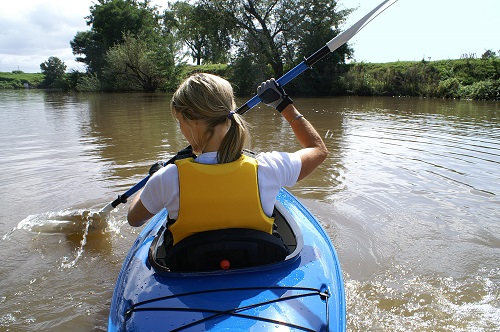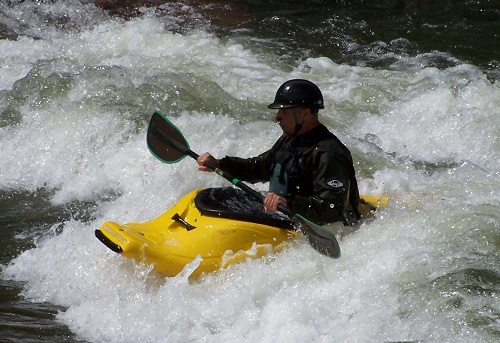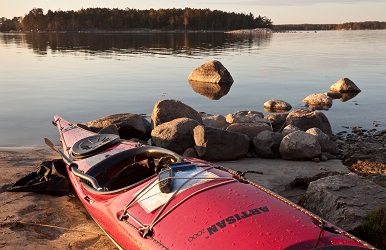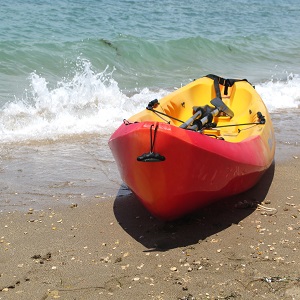You may think that kayaking with your kids would be a big hassle but you would be wrong. Kayaking with kids is incredibly fun and a great learning experience for both you and the children. It will take some planning and flexibility but it is worth the trouble. Here are some tips for planning your family trip and executing it like a pro.
Planning the Trip
Who is going?
Before you can start planning your trip, you need to decide who is going on the trip. There should be one adult on the trip who is an experienced paddler. Plan on having one adult per child unless the child is older and is a good swimmer. If you have too many adults per children, let the child invite a friend or two.
Where are you going?
When kayaking with children, you should go where there is calm water and minimal currents. A small lake, protected bays and slow rivers are the ideal places to take kids. The bathroom facilities should be considered as well. When a child has to go to the bathroom, they usually have to go now so the bathroom should be close to the shore. Make sure you choose a place that the kids want to go so let them help you out with the decision making.
How long will the trip be?
It is best to plan a short trip the first time taking the kids out on the water. Plan for a trip that is less than two hours regardless of age. Young toddlers probably won’t want to be on the water for more than ten minutes. Older kids can go on the water for a few quick loops around the lake. The older the child, the longer they can be out there paddling.
Practice Before Hitting the Water
Before you head out on the lake, consider signing up for paddling lessons or swimming lessons. You can often find swimming lessons at community pools. The children will be much safer if they know how to swim and they will be much more comfortable when learning basic kayaking techniques such as the wet-exit or roll.
What type of kayak should I bring?
When deciding which type of kayak you should bring, consider the length of the trip, the location, the age of the child, whether the child can swim and what you want to get out of the trip. No matter what type of kayak you choose, it is important to practice safety techniques on the water.
If you will be kayaking in a cold water area, I highly suggest that you go with a decked kayak. One adult can sit in the front and one in the back with the child in the middle gear compartment.
If you will be paddling in warm waters, a sit-on-top kayak is the perfect option. They can fit up to three small children and are much easier to carry from the car to the ocean or lake.
Solo or double?
Determining whether your child should paddle his or her own kayak can be a hard decision. You will need to consider the child’s age, size, physical ability and paddling experience. Generally, the rule of thumb is that children 8 and older can manage a kayak by themselves while children under 8 should be in a tandem kayak with an adult.
What size paddle should I bring?
Kayak paddles are available for children and they come in various sizes. When the bottom of the paddle is resting on the child’s shoe, the height should come up to their nose.
Safety Gear
Life Jackets
When it comes to safety, you don’t want to be cheap. It is illegal to be out on the water in a kayak without wearing a life jacket. Purchase a United States Coast Guard approved model and make sure it is sized appropriately for your child. PDF’s come in three sizes: infants (8-30 lbs), children (30-50 pounds) and youth (50-90 lbs). When wearing the jackets, make sure all straps are connected and secure. If you child does not like the life jacket, explain to them the purpose of it and give them a reward or prize for wearing it.
Lines and Floats
Always have a paddle float, throw-bag and tow line for each kayak. Be sure to practice safety techniques such as wet-exits and re-entry.
Warning: Never tie or tether a child to a kayak. This could trap the child underwater if the kayak capsizes.
Packing
Packing for a kayaking trip for kids is similar to packing for yourself. Make a list of the stuff you’ll need to take on the trip and divide it among the adults coming along. Be sure to give the kids some stuff to pack so they’ll feel included. Let older kids pack their own backpacks. You can check them later when the kids aren’t looking to make sure they aren’t bringing video games, smartphones or tablets. The kids can carry their backpacks with them on the trip so they will have easy access to their stuff.
Food and Hydration
When it comes to food, choose healthy, convenient items such as apples, trail mix, hard-boiled eggs, dried fruit, cheese and granola bars. Don’t forget the water either. Give each child a water bottle and make sure they drink enough throughout the day.
Clothing
Dress the children in water-resistant, breathable fabrics such as polyester. Bring an extra set of clothes for each child as they are bound to get wet and dirty no matter how careful they are. Store these clothes in a waterproof bag. A wide brim hat will protect their delicate faces from the sun. Waterproof shoes are a must so they don’t step on any sharp rocks on the shore. You should also bring some rain-gear, even if you are expecting sunny skies. You never know when the weather will change unexpectedly.
Other Items to Consider
- Binoculars
- Books
- Fishing gear
- Waterproof disposable camera
- Small tent
- Sunglasses
- Emergency whistles and first-aid kit
- Waterproof seat cushions
- Spray skirts
- Maps and compasses
Morning of the Trip
Before you get started on your trip, there are a few items of business to take care of. First, go over the safety procedures and make sure the kids know what might happen and how to react. Show them how to wet-exit and how to get back into the kayak after they have fallen out.
Before putting the kayak in the water, let the kids use the restroom, apply sunscreen and eat a snack. Load the kayak with your gear and make sure you have everything you need before pulling away.
On the Water
When you are out on the water, go slowly and give the kids time to get acclimated. They won’t be able to paddle as fast as you so don’t go to fast and get separated. You want to be close enough that they can ask questions or ask for help without having to yell at you or another adult.
This is a good teaching opportunity so show them the correct way to paddle, how to steer the boat, how to draw an eddy and how to brace against a wave. Give them clear rules so they don’t try to stand up in the yak. Make sure the kids know the punishment of breaking the rules.
Allow one paddler to lead the group and switch back and forth so everyone gets a chance to lead. If you are in a tandem, allow the child to paddle for a little bit to make them feel special. Even a toddler will have fun paddling for just a few minutes.
Finally, take a lot of breaks and allow the children to enjoy the scenery. If you see something that you think the children would like to see, point it out. The children love turtles, eagles, fish, dolphins, otters and other marine life.
Be flexible
Nothing will go exactly how you plan. You might get out on the water and suddenly your child has to go to the bathroom even though they just went. It will be frustrating but don’t let it get you down. Maintain a positive attitude despite the whining and be willing to change your schedule. Maybe an hour is too long for your children and you will have to shorten the trip. Or maybe the kids love it so much that two hours isn’t long enough.
Whatever you do, make sure that the kids are having fun. If they are board, suggest a game or point out some wildlife. After your trip, do something special such as having s’mores over a campfire or going out to dinner at the kids’ favorite restaurant.




